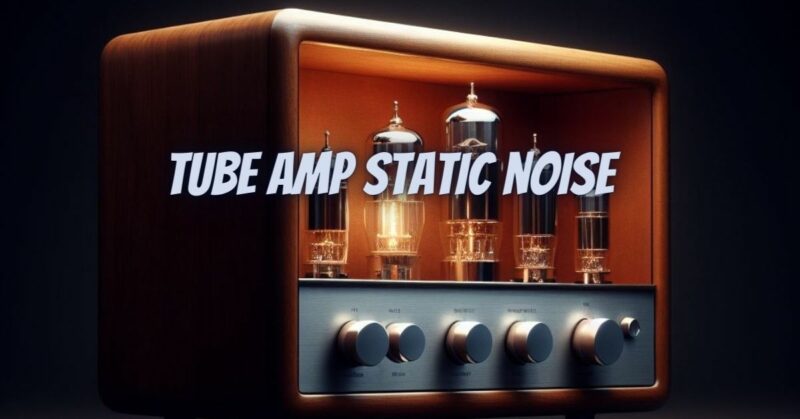Tube amplifiers, also known as valve amplifiers, are renowned for their warm and rich sound, making them a favorite among audiophiles and musicians. However, like any piece of audio equipment, tube amplifiers can exhibit certain quirks, and one common issue is the presence of static noise. In this comprehensive article, we will explore tube amp static noise, its potential causes, prevention measures, and solutions, so you can enjoy your tube amp without unwanted interruptions.
Understanding Tube Amplifiers
Before delving into tube amp static noise, let’s briefly review how tube amplifiers work. Tube amplifiers use vacuum tubes (electron tubes or valves) to amplify audio signals. These tubes consist of a cathode, an anode (or plate), and at least one control grid. When a small input voltage is applied to the control grid, it modulates the flow of electrons from the cathode to the anode, amplifying the audio signal.
Common Causes of Tube Amp Static Noise
Tube amp static noise can be caused by various factors, and understanding these causes is crucial for effective troubleshooting. Here are some common reasons for static noise in tube amplifiers:
- Tube Degradation: Over time, vacuum tubes can wear out or become microphonic, meaning they pick up vibrations from the environment. This can result in noise, crackling, or humming.
- Tube Socket Issues: Poor connections in the tube sockets or loose tubes can introduce static or intermittent noise.
- Dusty Potentiometers (Pots): The potentiometers (volume and tone controls) in your amplifier can accumulate dust and debris, leading to scratching or static noise when adjusted.
- Loose Wiring: Loose or damaged internal wiring can create static noise as connections become unstable.
- Interference: External sources of electromagnetic interference, such as power cables, radio signals, or other electronic devices, can induce noise in the amplifier.
- Faulty Components: Defective or aging components, such as capacitors or resistors, can introduce noise into the audio signal path.
Preventing Tube Amp Static Noise
Prevention is often the best approach to dealing with tube amp static noise. Here are some preventive measures to keep your tube amplifier running smoothly:
- Regular Maintenance: Perform routine maintenance, such as cleaning pots and sockets, tightening tube connections, and inspecting internal wiring for loose connections.
- Quality Tubes: Invest in high-quality tubes from reputable manufacturers, and follow recommended replacement intervals to ensure optimal performance.
- Isolation: Place your tube amp on a stable surface to minimize vibrations that can affect tubes. Isolate it from external sources of vibration.
- Shielding: Use shielded cables and ensure that the amplifier’s internal wiring is well shielded to reduce electromagnetic interference.
- Proper Ventilation: Ensure that your tube amp has adequate ventilation to prevent overheating, which can affect tube performance.
Solutions for Tube Amp Static Noise
If you encounter static noise in your tube amplifier, here are some troubleshooting steps and solutions:
- Clean Pots and Tube Sockets: Use contact cleaner or DeoxIT to clean potentiometers and tube sockets. Rotate the pots vigorously to remove any oxidation or debris.
- Re-seat Tubes: Gently re-seat all tubes in their sockets to ensure proper connections. Be cautious when handling tubes, as they can be fragile.
- Inspect Internal Wiring: Carefully inspect the internal wiring for loose or damaged connections and re-solder as needed.
- Check for Tube Issues: Swap tubes one at a time to identify any problematic tubes. If a tube is microphonic or noisy, consider replacing it with a new, high-quality tube.
- Reduce Interference: Place your tube amp away from sources of electromagnetic interference, such as Wi-Fi routers, fluorescent lights, and power cables. Use high-quality shielded cables.
- Professional Servicing: If the issue persists or if you are not comfortable performing troubleshooting, consult a qualified technician or amplifier repair specialist for diagnosis and repair.
Tube amp static noise can be a nuisance but is often manageable with proper maintenance, preventive measures, and troubleshooting. Regular care, such as cleaning, re-seating tubes, and inspecting wiring, can go a long way in preventing and resolving static noise issues. With a well-maintained tube amplifier, you can continue to enjoy the warm and rich sound that tube amplifiers are known for, free from unwanted interruptions.


